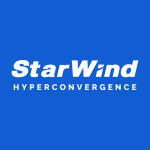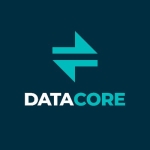Easy and cheap High Availability is most valuable for us. Also, the VSA (virtual appliance) version enables us to reuse already installed hardware. You do not need to worry about RAID and components anymore, because even a whole chassis loss does not stop this product.
We are able to build server clusters without external storage and still provide high availability. We are able to run the VSA version inside the actual servers, thus converging server and storage in same units.
The new Quorum Witness function is promising for easier deployment but needs better reliability.
We have been using StoreVirtual solutions since 2010 when it was known as LeftHand.
We have had no issues with the deployment.
We have had no issues with the stability.
We have had no issues scaling it.
Customer Service:
Customer service is outstanding.
Technical Support:
Technical support is excellent.
We have used many monolithic and traditional storage systems and all proved to not be highly available with single units. However, StoreVirtual can be split into two, providing you the benefit of redundant active data centers without doubling the cost.
Initial setup is easy, but the differences from traditional storage requires some learning curve. You need to know about managers concept of StoreVirtual. Fortunately newer versions of centralized management console (CMC) provides warnings when you have configurations that would result in reduced availability.
HPE Installation Services are recommended. Since we are an integrator, we provide this.
ROI usually takes about a year.
If you think about high availability the product is very cheap because it is an all inclusive offering. You need to buy licenses and two of traditional products compared to StoreVirtual.
The VSA version is free for every brand server up to 1TB/node up to three nodes. There is also a 60 day trial for more than 1TB storage. You just need the license key to continue managing the product without reinstalling if you purchase it.
It is the only product that provides High Availability without depending on OS multipath I/O. It looks like a single unit from the outside, thus there is no need for failover/failback because all nodes are active. It is like a metro train compared to a classic diesel train, meaning it has an engine in every car. Adding capacity means adding performance because you are adding controllers, too. We can’t say it is the fastest product on the planet, but it is definitely not slow. High Availability means synchronized replication over the network, adding a little latency but providing High Availability.
Since it is IP-based, it is important to make sure a network problem does not result in the collapse of storage network. It is best to have redundant switches that do not share the same network as applications. VLANS are definitely recommended.
Pay attention to the managers running and make sure your failover manager is not bound to any nodes. A failover manager needs to be alive for smaller clusters to survive complete hardware/network failures. Make sure there is no single point of failure that would result in multiple nodes going down.









